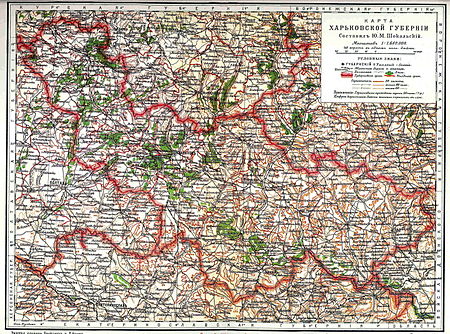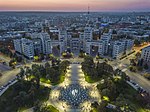Kharkov Governorate

The Kharkov Governorate (Pre-reformed Russian: Ха́рьковъская губе́рнія, tr. Khar'kovskaya guberniya, IPA: [ˈxarʲkəfskəjə ɡʊˈbʲernʲɪjə]; Ukrainian: Харківська губернія, romanized: Kharkivska huberniia) was a governorate of the Russian Empire founded in 1835. It embraced the historical region of Sloboda Ukraine. From 1765 to 1780 and from 1796 to 1835 the governorate was called the Sloboda Ukraine Governorate. In 1780-1796 there existed the Kharkov Viceroyalty. From 1765 to 1780, the Sloboda–Ukraine Governorate existed. In 1780, the Kharkov Viceroyalty was established and lasted until 1796. In 1835, the Viceroyalty was again reorganized into the Sloboda-Ukrainian Governorate, and from 1835 onwards, the Kharkov Governorate was formed, which existed until 1925. With each reorganization, the boundaries and administrative structure change significantly. The main state tax implementation, processing, and publishing of statistical information for the Kharkov governorate were the Kharkov Governorate Statistical Committee.
Excerpt from the Wikipedia article Kharkov Governorate (License: CC BY-SA 3.0, Authors, Images).Kharkov Governorate
Дубова алея, Kharkiv Derzhprom
Geographical coordinates (GPS) Address Nearby Places Show on map
Geographical coordinates (GPS)
| Latitude | Longitude |
|---|---|
| N 50 ° | E 36.2292 ° |
Address
Скульптура «Ваш портрет пензля Іллі Рєпіна»
Дубова алея
61057 Kharkiv, Derzhprom
Kharkiv Oblast, Ukraine
Open on Google Maps








